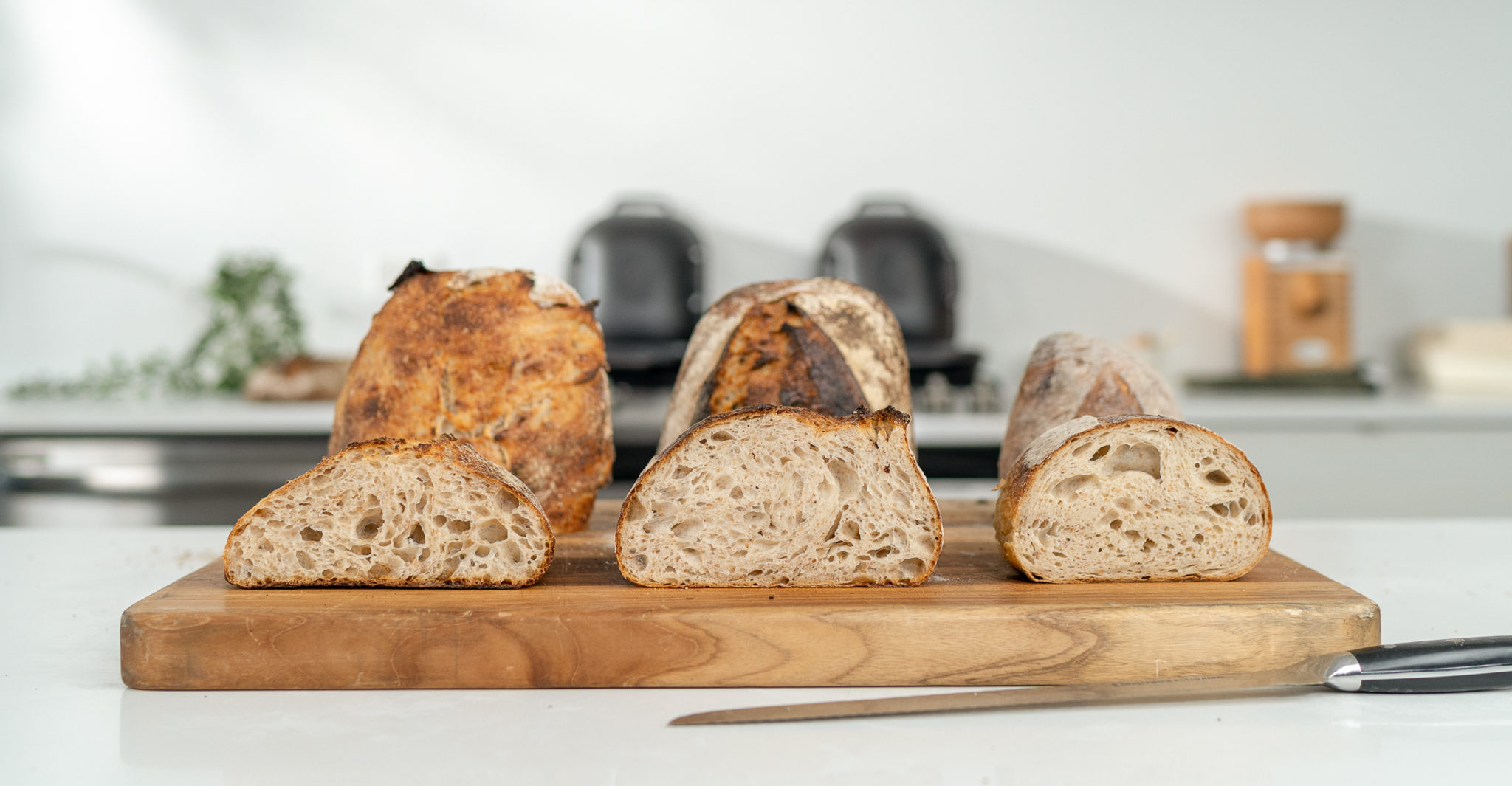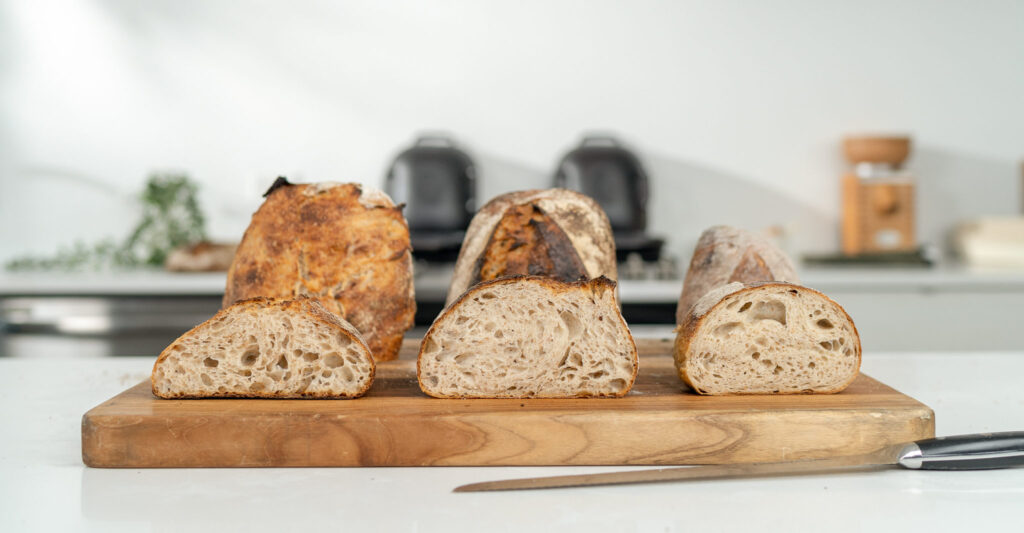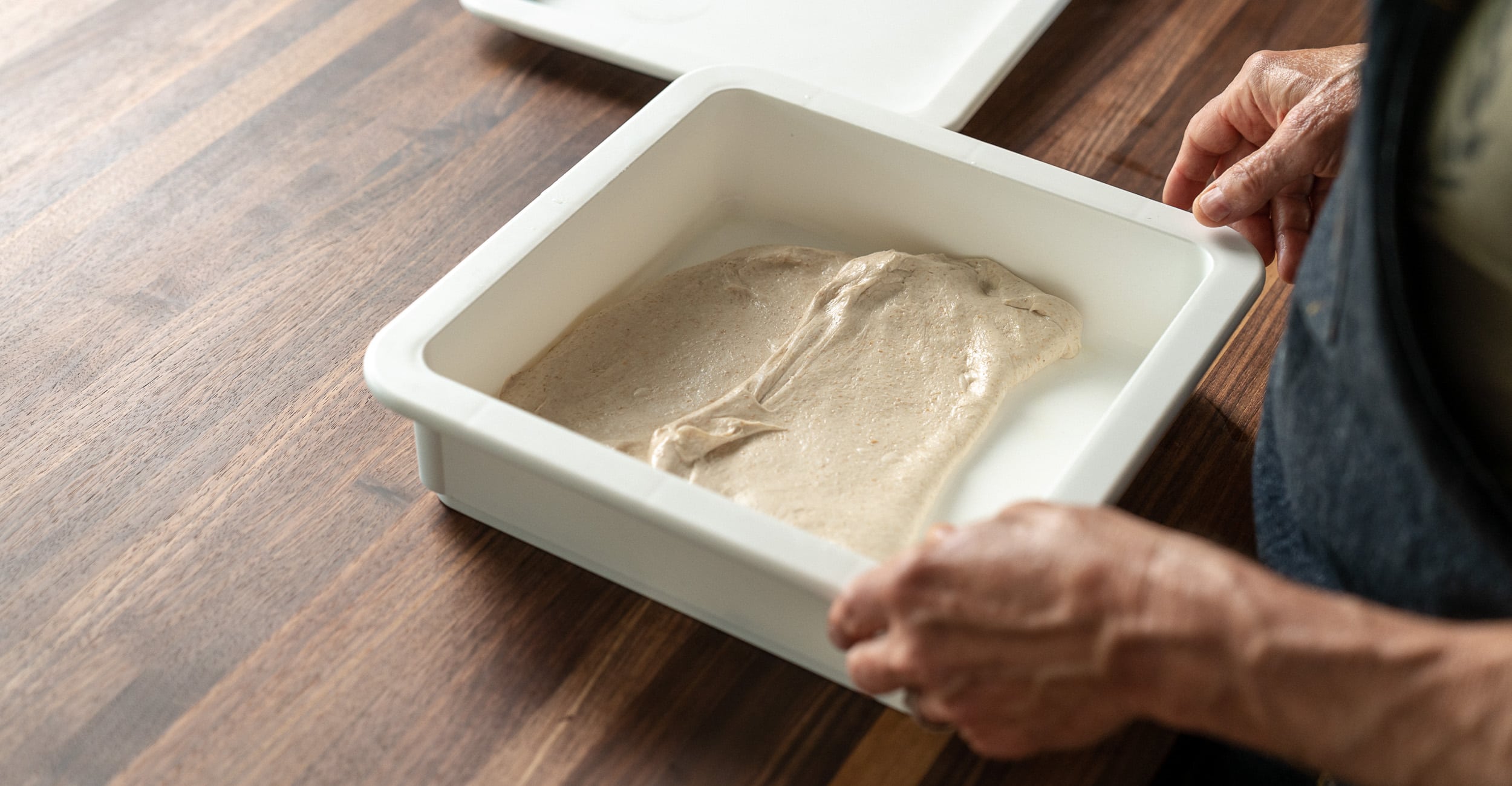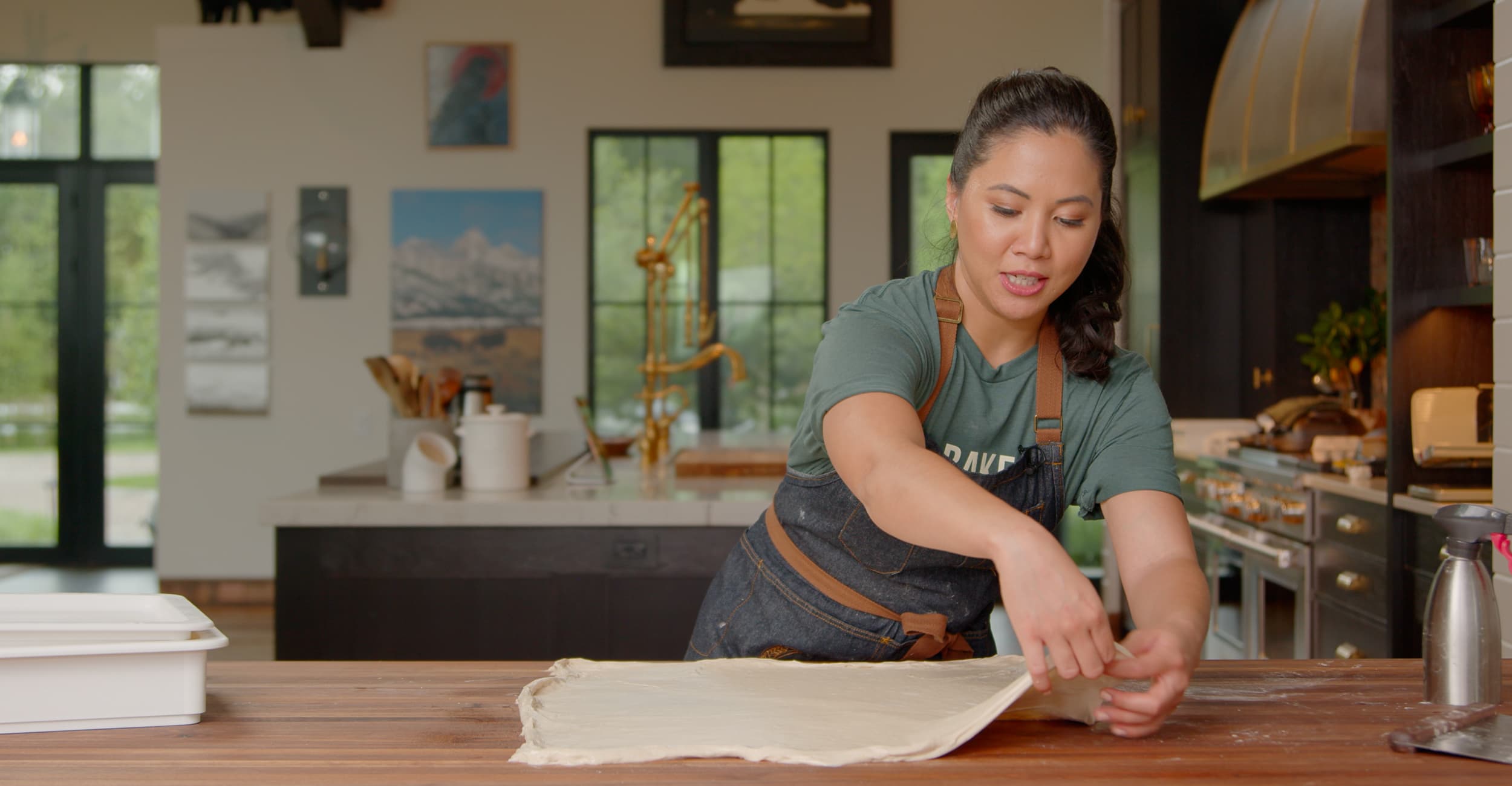
Identifying Proofing Levels in Baked Bread
There are several telltale indicators in a baked loaf of sourdough that can help you understand if your bread was under proofed, over proofed, or was proofed just the right amount. Here are several things to look for in your baked loves to see if you are proofing your dough for the correct amount of time.
Table of Contents
- Shape and size
- What to look for in an under proofed loaf
- What to look for in a properly proofed loaf
- What to look for in an over proofed loaf
- Color clues
- Crumb structure
Related Posts
Pre-Shape & Bench Rest
Maintaining a Sourdough Starter
Spotting Scoring Mistakes
Please email us at
techniques@challengerbreadware.com with your
comments and questions.
Shape and size
One of the quickest ways to gauge the proof on your baked bread is to take a closer look at the shape and size of the loaf.

What to look for in an under proofed loaf
One of the most common traits of an under proofed loaf is uncontrolled tearing in the sides. Because the yeast still has too much fuel when it hits the oven, the loaf will continue to rise once the crust has already begun to form, which causes ripping and bursting in the sides from the excess CO2 escaping from the loaf.
Under proofed loaves often have a considerable amount of height because of this massive expansion in the oven, but the overall shape tends to be uneven, and generally without a good ear where the dough was originally scored. Under proofed bread is often smaller in width and length, due to a lack of proper development during the proofing stage.
What to look for in a properly proofed loaf
A loaf of bread that has been proofed for the correct amount of time will retain its shape in the oven, and expand evenly in both length and width. It will also have a good oven spring, and is more likely to develop a beautiful ear.
What to look for in an over proofed loaf
Similar to the signs of over proofed dough, an over proofed loaf will be very flat, without much rise or retention of shaping. Over proofing destroys the structural integrity of the bread, so loaves that have gone over are unable to hold their shape in the oven.
Color clues
The color of your loaf can also give you hints about whether your dough has been over proofed. The fermentation process eats up the available sugars in the bread, so when that process has gone on too long and there is not much sugar left in the dough, it is much harder for the crust to properly caramelize and brown in the oven.
Properly proofed dough has enough sugars remaining in the dough to produce a beautiful brown, crackly, caramelized crust.
Crumb structure
The last place to look for indicators of proofing levels in your bread is the crumb structure. The interior of your bread can tell you a lot about the fermentation, and proofing of the loaf.
The crumb structure of an under proofed loaf will be tight and gummy. Because it was not given enough time to develop and trap CO2 gasses, the crumb structure will be very dense, with uneven air bubbles.
Properly proofed dough will be much more consistent in structure, with a soft and fluffy interior, and larger, but more evenly dispersed air bubbles present in the crumb.
Over proofed bread is likely to have a very open crumb structure, due to the development of excess CO2 during the proofing stage.

What do you do when you want enhanced flavor and texture in your bakes, but don’t have a sourdough starter ready to go? Make a poolish!
- Feb 08, 2023
- 2 min read
The 10” fold is our own, Jim Challenger’s simple way to build gluten from inside the Proofing Box.
- Mar 20, 2023
- 2 min read + video
The lamination method is a way to build strength and structure in dough.
- Mar 20, 2023
- 2 min read + video



